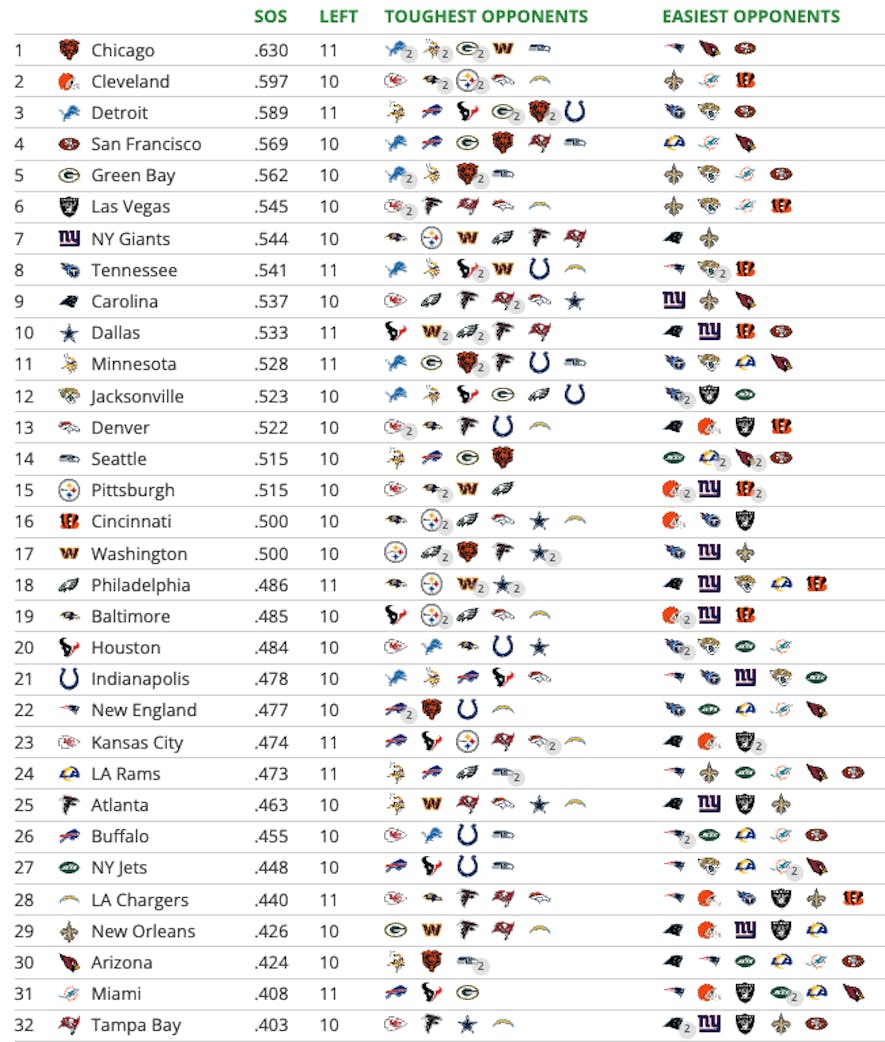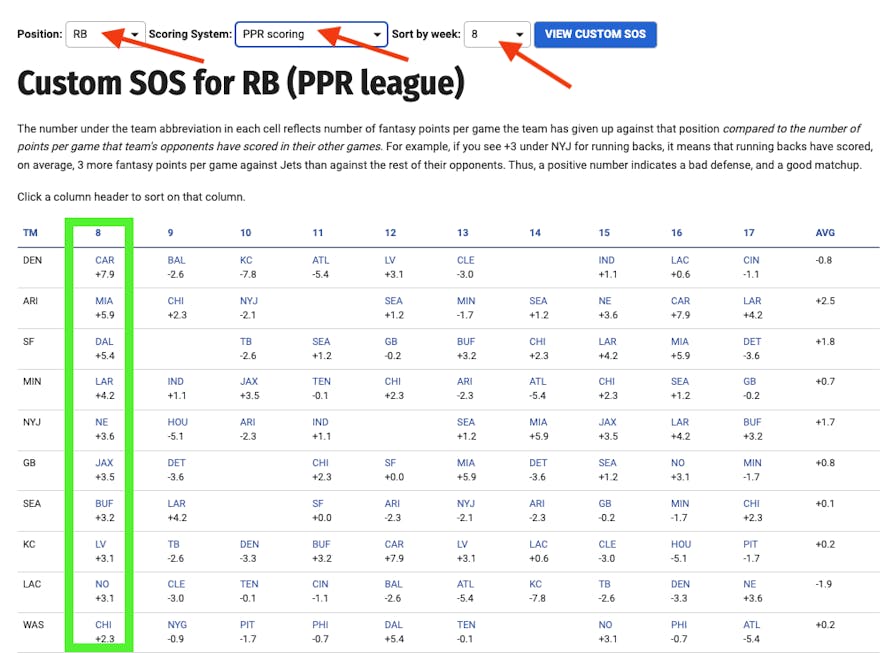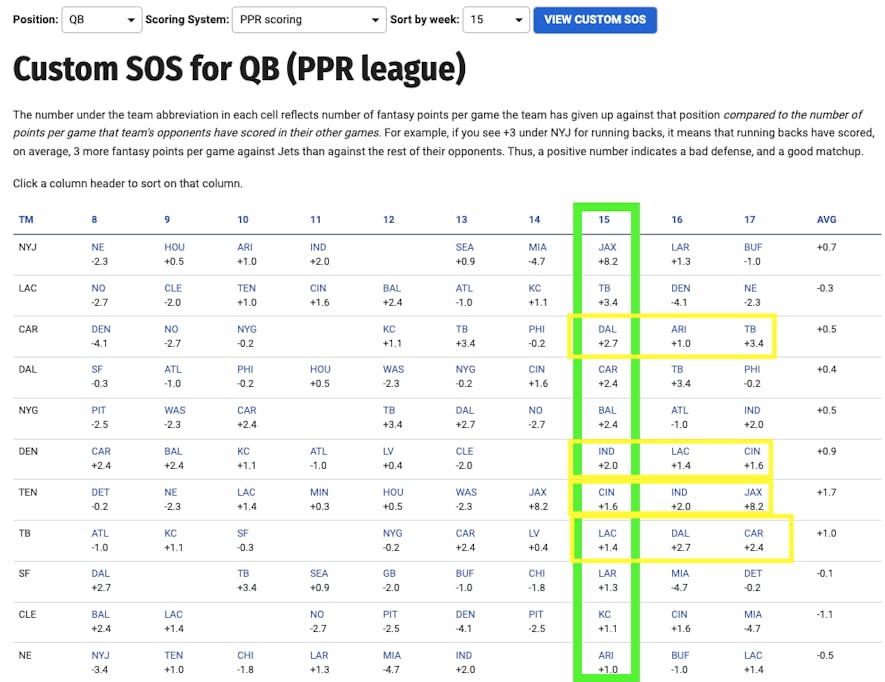Fantasy Overview offers a weekly breakdown of key information, stats, and strategies to help you excel in your fantasy league. Stay informed about the ever-changing landscape and gain insights to boost your success.
Strength of Schedule: The Key to Fantasy Football Success in the Second Half
The second half of the 2024 NFL season is almost here, and with it comes the crucial stretch of games that will determine who makes the playoffs and who goes home. For fantasy football managers, this means paying close attention to strength of schedule (SOS) as you make your lineup decisions. This can also be a guide for improving your roster through trades. The more you know about a player's schedule, the better off you will be with your trade proposals.
SOS is a measure of how difficult a team's schedule is based on the combined winning percentages of their opponents. A team with a tough SOS will face more talented defenses and offenses, while a team with an easy SOS will have a more favorable path to victory.
When it comes to fantasy football, SOS is especially important in the playoffs (Weeks 15-17). This is because you want to have your best players on the field during the most crucial games of the season. If you have a player on a team with a tough SOS, they may be more likely to struggle and disappoint you in your fantasy league.
On the other hand, if you have a player on a team with an easy SOS, they are more likely to put up big numbers and help you win your fantasy league.
Here is a look at the strength of schedule for all 32 NFL teams from Week 8 sorted by SOS strength (1 = hardest, 32 = easiest). Credit to our good friends at tankathon.com for this chart. Interestingly enough, seven of the top 10 toughest remaining schedules are NFC teams.
Keep in mind, this chart is determined by win percentage, so San Francisco may be considered an easy opponent with a 3-4 record, while Atlanta and Indianapolis are considered tough opponents with a 4-3 record. Baltimore has allowed the most passing yards in the league, but they are considered a tough opponent due to their 5-2 record. Use this chart as a tool, but know it's not driven specifically from defensive or offensive results, but by wins and losses.
As you can see, there is a wide range of SOS values across the league. Some teams have a difficult road ahead, while others have a much easier path to the playoffs.
Footballguys Classic Strength of Schedule
Footballguys has an interactive tool where you can sort strength of schedule results by week and position and customize it to your league's scoring system.
The image below displays running back SOS for a PPR scoring system, sorted by Week 8. You can see that Denver has the best SOS matchup against Carolina with +7.9. The number under the team abbreviation in each cell reflects number of fantasy points per game the team has given up against that position compared to the number of points per game that team's opponents have scored in their other games. For example, if you see +3 under NYJ for running backs, it means that running backs have scored, on average, 3 more fantasy points per game against Jets than against the rest of their opponents. Thus, a positive number indicates a bad defense, and a good matchup.
If you want to look at other positions, sort by other weeks, or even other league scoring formats, you can easily do so. Use this tool to your advantage.
Below is another example looking at the SOS for quarterbacks sorted by Week 15, but you can also gauge other weeks. Say for example, you want to see how a team's SOS also shapes up for Week 16 and Week 17. Those with +numbered results for each of Weeks 15, 16, and 17 are highlighted in yellow. That would mean their SOS for the playoff stretch (Weeks 15, 16, 17) is a good one because they have three consecutive weeks of positive numerical value.
Playoff Quarterbacks to Target
When looking at teams with favorable schedules for quarterbacks in Weeks 15-17, it just so happens that those teams have less productive quarterbacks in general. Teams like Carolina, Tennessee, Denver, and New England are favorable during that time, but would you trust your playoff hopes on Andy Dalton, Bo Nix, Drake Maye, or Will Levis? At this point, no.
Aaron Rodgers (at Jacksonville, LA Rams, at Buffalo) and Baker Mayfield (at LA Chargers, at Dallas, Carolina) have good but not great schedules, so they may be ones to target. Mayfield should have Mike Evans (hamstring) back by then. Rodgers should hopefully have his cast of Davante Adams and Garrett Wilson at his disposal. Other honorable mentions include Dak Prescott (at Carolina, Tampa Bay, at Philadelphia), Justin Herbert (Tampa Bay, Denver, at New England), and Daniel Jones (Baltimore, at Atlanta, Indianapolis).
Any quarterback matchup against the Jaguars is preferred. Jacksonville allows the most fantasy points to opposing quarterbacks at an average of 285 passing yards and 2.3 passing touchdowns per game.
Other teams allowing 2.0+ passing touchdowns per game include Houston, Carolina, and Baltimore.
Other teams allowing north of 250+ passing yards per game include Baltimore, Minnesota, Tampa Bay, Detroit, and New Orleans.




